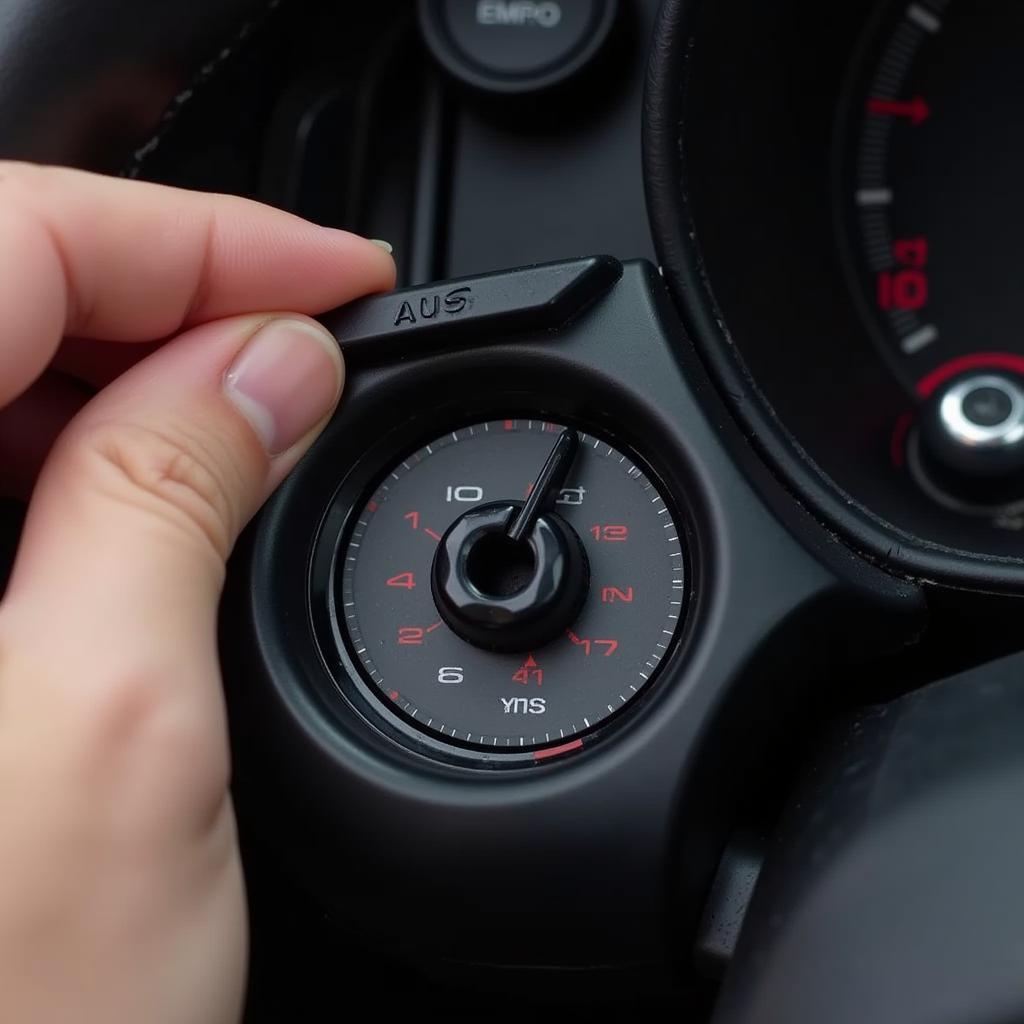The 2008 Buick Enclave brake warning light can be a jarring sight. This article provides a comprehensive guide to understanding, diagnosing, and resolving the issues that can trigger this warning light, empowering you to address the problem effectively.
Understanding the Buick Enclave Brake System
The brake system in your 2008 Buick Enclave is a complex network of components working together to ensure safe and reliable stopping power. From the brake pedal to the rotors and calipers, understanding how these parts interact is crucial to diagnosing brake warning light issues. The brake warning light itself serves as a critical alert, signaling potential problems within this system. It can indicate anything from low brake fluid to more serious issues like a malfunctioning ABS system.
Common Causes of the 2008 Buick Enclave Brake Warning Light
Several factors can trigger the brake warning light in your 2008 Buick Enclave. Low brake fluid is a frequent culprit, often caused by worn brake pads or a leak in the brake lines. A faulty brake sensor, responsible for monitoring brake fluid levels and pad wear, can also trigger the light. Other potential causes include a malfunctioning ABS (Anti-lock Braking System) module, worn brake rotors, or issues with the parking brake.
Diagnosing the Brake Warning Light
Diagnosing the cause of the brake warning light requires a systematic approach. Start by checking the brake fluid level. If it’s low, top it off and monitor it closely for further drops. Inspect the brake lines for any signs of leaks. Next, check the condition of your brake pads. If they’re worn down, they’ll need to be replaced. If the brake fluid level and pads are fine, it’s recommended to have a qualified mechanic diagnose the ABS system and other brake components using diagnostic tools.
How to Fix the Brake Warning Light
Fixing the brake warning light depends on the underlying cause. If it’s low brake fluid, topping it off is the first step. However, persistent low fluid indicates a leak that needs professional attention. Worn brake pads require replacement, which can be done by a mechanic or a DIY enthusiast with the right tools and experience. Issues with the ABS system or other brake components often require specialized diagnostic equipment and expertise, making a trip to a qualified mechanic essential.
Remote Diagnostics and Software Solutions
In some cases, the brake warning light may be triggered by a software glitch. Remote diagnostics and software updates can sometimes resolve these issues without physical intervention. This involves connecting your vehicle to specialized software that can identify and rectify software-related problems within the brake system. This cutting-edge technology offers a convenient and efficient solution for certain brake light issues.
“Remote diagnostics is becoming increasingly important in modern vehicle repair,” says automotive electronics expert, David Miller, ASE Certified Master Technician. “It allows us to pinpoint and resolve software-related issues quickly and efficiently, often saving the customer time and money.”
Conclusion
The 2008 Buick Enclave brake warning light should never be ignored. Addressing the underlying issue promptly is crucial for your safety and the longevity of your vehicle. By understanding the potential causes and following the diagnostic steps outlined in this article, you can effectively troubleshoot the problem and take the appropriate action. Remember, if you’re unsure about any aspect of brake repair, consulting a qualified mechanic is always the safest course of action. Don’t delay, address your 2008 Buick Enclave brake warning light today.
FAQ
- What does the brake warning light mean? The brake warning light indicates a potential problem with your braking system, such as low brake fluid, worn brake pads, or a malfunctioning ABS system.
- Is it safe to drive with the brake warning light on? It’s not recommended. Driving with the brake warning light on could compromise your braking ability and put you at risk.
- How do I check my brake fluid level? Locate the brake fluid reservoir in the engine bay, usually a clear plastic container. The fluid level should be between the minimum and maximum lines.
- How often should I replace my brake pads? Brake pad lifespan varies depending on driving habits and conditions. It’s generally recommended to have them inspected every 12,000 miles.
- What is the ABS system? The Anti-lock Braking System (ABS) prevents wheel lockup during hard braking, helping maintain steering control.
- Can I fix the brake warning light myself? Simple tasks like topping off brake fluid can be done at home. However, more complex issues require professional attention.
- How much does it cost to fix a brake warning light issue? The cost varies depending on the underlying cause and labor rates.

